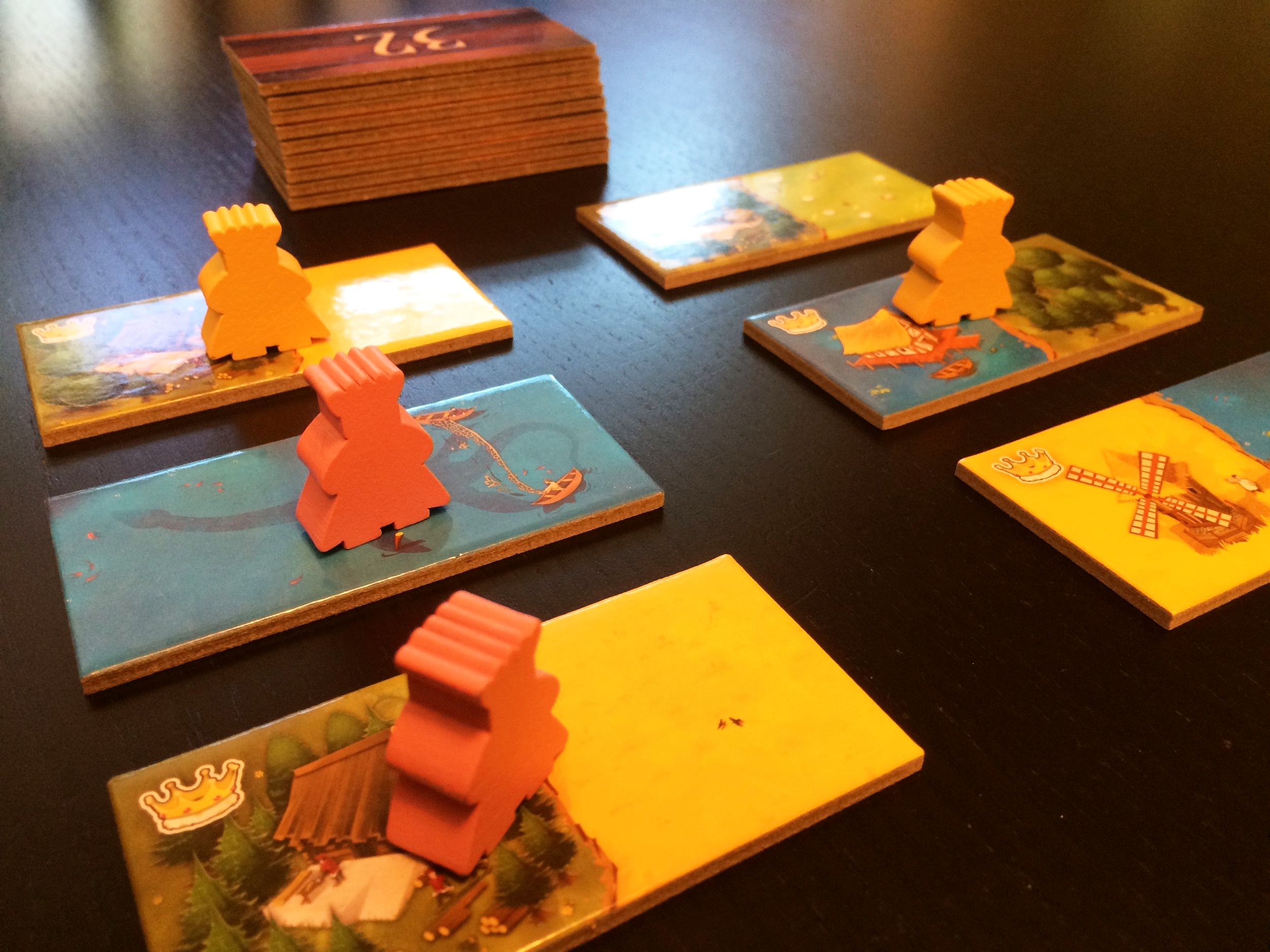Meaningful Decisions: Bruno Cathala on Design Choices in Kingdomino
/In our Meaningful Decisions series, we ask designers about the design choices they made while creating their games, and what lessons other designers can take away from those decisions.
In this edition, we talk with Bruno Cathala, the designer of the Spiel des Jahres winner Kingdomino, about putting restrictions on players, variable turn order, rule changes for different player counts, and more.
In Kingdomino, players select tiles using a drafting system that makes players weigh a tradeoff between getting a better tile now versus getting better drafting position next round. Where did this system come from? What other aspects of the design rely on it for the game to work as a whole?
This system is one example of what I call a “blessing in disguise.” In my games, very often, when I’m offering something very good to one player in the short term, he will pay a kind of counterpart. This is the case here: If you choose to draft the best domino, on the next turn, you will have no choice at all, just having to accept what other players don’t want. This kind of mechanism really helps to get a good balance.
One other aspect which is important in the game, is the distribution of different land categories. You have a lot of wheat fields and forests, but few crowns inside them. You have few gold mines or swamps, but many more crowns inside. And as far as points are, at the end, the result of multiplying the number of spaces by the number of crowns, you will be able to get a satisfying number of victory points, never mind the category of land you chose at the beginning.
Do games that allow players to vary turn order have any particular design considerations or pitfalls to avoid?
I like systems that break the basic “clockwise turn sequence” because it avoids having to always play after the same player. If the player is not very good, it gives you an advantage, and when it’s a very good player, you have a disadvantage. The counterpart can be increasing downtime, when you go first on one round, and last on the next one.
Players in Kingdomino must build their kingdom within a tight, five-by-five grid. This forces players to plan ahead or risk being unable to place a tile later on. Did the game always restrict players to that five-by-five grid, and what was it about that restriction that made you decide to use it?
In a game as simple as Kingdomino, tension comes from restrictions: If you were in a position to always place your tiles the way you want, you would lose some tension in the game. That’s the reason why I introduced two restrictions: You must be connected with your castle and/or to the same color, and you must stay in a 5x5 grid. Two simple restrictions which create a tension that increases throughout the game.
Also, it’s a way to introduce a little more interaction between the players. If I’m playing before you, I will make my choice analyzing what is good for me, and what could be absolutely bad for you. (Maybe I can force you to discard one tile because you have no solution.)
My first prototype, to validate the concept, was on a 4x4 grid, with eight dominoes per player. It was nice, but not long enough. So I increased it to 12 dominoes. At first, there was no castle, and players had to fulfill a 4x6 grid. But it was confusing for some of them. That’s the reason why Sébastien Pauchon (Jaipur), who is a friend and a talented game designer, suggested to me to add the castle tile, allowing players to play on a 5x5 grid.
How do you know if a particular restriction on players will be fun or just frustrating?
First of all, my personal theory is that frustration is the main mechanism which leads to games you want to play again and again. After your first game, if you have absolutely no frustration, you don’t want to play again. If frustration is too high, same: You don’t want to play again.
So I try to find a good level, which is not easy, because we all have our own frustration limits. For example, for some players, rolling a die and having no chance to change the result is too frustrating.
Then I have to say that I’m designing my games… for myself! I’m always working on the game I want to play. So the final balance for frustration is the one which is satisfying to me.
I consider a game designer to be someone who shows a path and then tries to convince people to follow him in that direction.
In the two-player version of Kingdomino, each player uses two pawns instead of one. This means players can and should plan further ahead each round. How did the rules for the two-player game come together?
This change to the rules was necessary to keep some tension during the choice of dominos with fewer players. Imagine that players have only one pawn. Selection would have been very automatic. No tension at all. So it would have been uninteresting.
As you know, I’m really a fan of two-player games. I myself play a lot at only two players. So I wanted the game to be interesting for two. I don’t like when it’s written “for 2 to X players” on the box, but with the game being very flat at two players.
So… It seemed to me that playing with two pawns could be a good solution. This was confirmed the first time I tried it.
And moreover, at two players, you can play on a 7x7 grid, using all the tiles, which is probably my favorite configuration.
When a game has to change some rules for certain player counts, how do you decide how different the game should be when it is played with that many players?
I don’t really care to have exactly the same game experience depending on the number of players. The thing which matters for me is to create the best game experience possible, never mind how many players you are. So, to keep that interesting game experience, I have no problem making the changes which seem necessary to me.
Cardboard Edison is supported by our patrons on Patreon.
ADVISERS: Rob Greanias, Peter C. Hayward, Aaron Vanderbeek
SENIOR INVENTORS: Steven Cole, John du Bois, Chris and Kathy Keane (The Drs. Keane), Joshua J. Mills, Marcel Perro, Behrooz Shahriari, Shoot Again Games
JUNIOR INVENTORS: Ryan Abrams, Joshua Buergel, Luis Lara, Neil Roberts, Jay Treat
ASSOCIATES: Stephen B Davies, Adrienne Ezell, Marcus Howell, Thiago Jabuonski, Samuel Lees, Doug Levandowski, Nathan Miller, Mike Sette, Matt Wolfe
APPRENTICES: Cardboard Fortress Games, Kiva Fecteau, Guz Forster, Scott Gottreu, Aaron Lim, Scott Martel Jr., James Meyers, Tony Miller, The Nerd Nighters, Matthew Nguyen, Marcus Ross, Rosco Schock, VickieGames, Lock Watson, White Wizard Games













